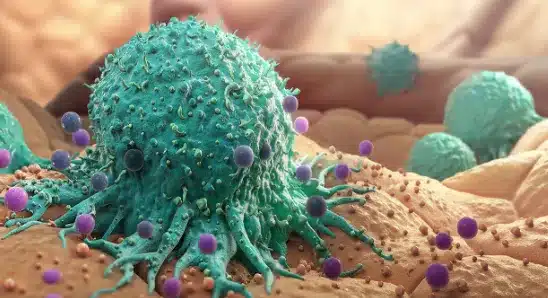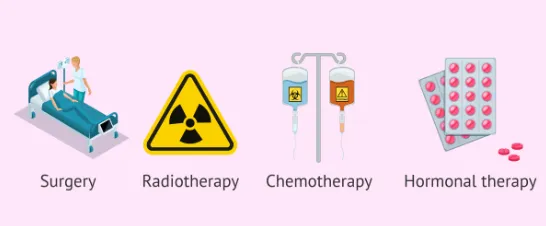Cancer treatments encompass a diverse array of approaches aimed at combating malignant diseases. Key modalities include chemotherapy, which utilizes drugs to destroy cancer cells, radiation therapy, employing high-energy rays to target and shrink tumors, and immunotherapy, harnessing the body’s immune system to recognize and attack cancer cells. Together, these strategies form a multifaceted approach in the fight against cancer, offering hope and improved outcomes for patients worldwide.
History of Cancer Treatments
The history of cancer treatments dates back thousands of years. Ancient civilizations, such as the Egyptians, used surgical techniques to remove tumors. In the modern era, advancements in medical science have revolutionized the approach to treating cancer. The development of radiation therapy, chemotherapy, immunotherapy, targeted therapies, and precision medicine has significantly improved survival rates and patient outcomes.
Clinic contact number: +989371200167
What is Cancer?
Cancer is a term used to describe a group of diseases characterized by the uncontrolled growth and spread of abnormal cells in the body. These cells, known as cancer cells, divide and invade surrounding tissues, potentially spreading to other parts of the body through the bloodstream or lymphatic system. If left untreated, cancer can be life-threatening.
Types of Cancers

Cancer can occur in any part of the body. There are more than 100 different types of cancer, each with its unique characteristics and treatment approaches. Some common types include breast cancer, lung cancer, prostate cancer, colorectal cancer, and skin cancer. Each type of cancer has its specific diagnostic methods and treatment strategies tailored to the individual patient.
Hematologic Cancers
Hematologic cancers, including leukemia, lymphoma, and multiple myeloma, originate from abnormal blood cells and bone marrow.
Leukemia
Leukemia is a cancer of the blood and bone marrow, were abnormal white blood cells multiply uncontrollably. It can be acute or chronic and is categorized based on the type of white blood cell affected (e.g., lymphoblastic leukemia, myeloid leukemia).
Lymphoma
Lymphoma is a cancer of the lymphatic system, which includes lymph nodes, spleen, thymus, and bone marrow. It can be Hodgkin lymphoma (characterized by Reed-Sternberg cells) or non-Hodgkin lymphoma (more common and diverse).
Multiple Myeloma
Multiple myeloma is a cancer of plasma cells, a type of white blood cell that produces antibodies. It typically affects bone marrow and can lead to bone pain, fractures, anemia, and kidney problems.
Solid Tumor Cancers
Breast Cancer
Breast cancer forms in the breast tissue and can occur in both men and women. It is often detected as a lump in the breast and may spread to nearby lymph nodes and other parts of the body.
Lung Cancer
Lung cancer develops in the lungs, usually in the cells lining air passages. It is strongly linked to smoking but can also occur in non-smokers due to other risk factors such as exposure to radon or asbestos.
Colorectal Cancer
Colorectal cancer affects the colon or rectum and usually develops from benign polyps. It can be detected early through screening tests like colonoscopy and treated with surgery, chemotherapy, or radiation.
Prostate Cancer
Prostate cancer occurs in the prostate gland in men and is usually slow growing. It may not cause symptoms in the early stages but can be detected through screening tests like PSA (prostate-specific antigen) blood tests.

Pancreatic Cancer
Pancreatic cancer starts in the pancreas and is often diagnosed at an advanced stage due to its subtle symptoms. It is challenging to treat but may involve surgery, chemotherapy, or targeted therapy.
Ovarian Cancer
Ovarian cancer begins in the ovaries and is often not detected until it has spread within the pelvis and abdomen. Symptoms may include abdominal bloating, pelvic pain, and changes in bowel habits.
Skin Cancer
Skin cancer includes melanoma (which arises from pigment-producing cells) and non-melanoma skin cancers (such as basal cell carcinoma and squamous cell carcinoma). It is often caused by exposure to ultraviolet (UV) radiation from the sun or tanning beds.
Central Nervous System (CNS) Cancers
Central Nervous System (CNS) cancers originate from abnormal cell growth within the brain or spinal cord, including primary brain tumors and spinal cord tumors.
Brain Tumors
Brain tumors can be primary (starting in the brain) or metastatic (spread from other parts of the body). Symptoms may include headaches, seizures, cognitive changes, or balance problems.
Spinal Cord Tumors
Spinal cord tumors can be intramedullary (arising from cells within the spinal cord) or extramedullary (arising from surrounding tissues). They can cause pain, weakness, or sensory changes depending on their location.
Clinic contact number: +989371200167
What are Cancer Treatments?
Cancer treatments encompass a range of therapeutic approaches aimed at combating the disease. The primary goals of cancer treatments are to eliminate cancer cells, prevent their spread, and improve the patient’s quality of life. Treatment choice depends on several factors, including the type and stage of cancer, the patient’s overall health, and individual preferences.
The Most Common Cancer Treatments
- Surgery: Surgical procedures involve the removal of tumors and surrounding tissues. It is often the primary treatment for solid tumors and can be curative or palliative.
- Radiation Therapy: This treatment utilizes high-energy radiation to kill cancer cells or inhibit their growth. It can be delivered externally or internally (brachytherapy) and is often used with other treatments.
- Chemotherapy: Chemotherapy involves using drugs to kill or slow the growth of cancer cells. It can be administered orally or intravenously and is sometimes combined with other treatments.
- Immunotherapy: This innovative approach stimulates the patient’s immune system to recognize and destroy cancer cells. Immunotherapy has shown remarkable success in treating certain types of cancer, such as melanoma and lung cancer.
- Targeted Therapies: These treatments specifically target the genetic mutations or abnormalities present in cancer cells. They are designed to disrupt the growth and survival of cancer cells while minimizing harm to healthy cells.
- Hormone Therapy: Hormone therapy is primarily used in hormone-related cancers such as breast and prostate cancer. It aims to block or interfere with hormone production to inhibit cancer growth.
- Stem Cell Transplantation: Stem cell transplantation involves replacing damaged bone marrow with healthy stem cells to restore the body’s ability to produce blood cells. It is often used in the treatment of blood-related cancers.
What Do Cancer Treatments Involve?
Cancer treatments typically involve a multidisciplinary approach, combining the expertise of oncologists, surgeons, radiation oncologists, and other healthcare professionals. The treatment process may include the following steps:
- Diagnosis: Accurate diagnosis is crucial in determining the type and stage of cancer. It involves physical examinations, imaging tests, biopsies, and laboratory analyses.
- Treatment Planning: After diagnosis, an individualized treatment plan is developed, considering the type of cancer, its stage, and the patient’s overall health. The plan may involve one or a combination of treatment modalities.
- Treatment Administration: Cancer treatments are administered according to the established plan. Surgery, radiation therapy, chemotherapy, and other treatments are delivered as scheduled, with regular monitoring and follow-up.
- Monitoring and Follow-up: After completing initial treatment, patients undergo regular follow-up appointments and tests to monitor their progress and detect any potential recurrence or side effects.
One of the most common types of treatment for many cancer types is chemotherapy, which uses drugs to kill fast-growing cancer cells. Cancer Center
-
Different types of cancer require tailored treatment approaches to ensure the best possible outcomes and benefits for patients.
Benefits of Cancer Treatments
- Improved Survival: Cancer treatments have significantly increased survival rates, allowing patients to live longer and healthier lives.
- Tumor Reduction: Surgical interventions and targeted therapies can reduce the size of tumors, alleviating symptoms and improving the patient’s quality of life.
- Pain Relief: Palliative treatments, such as radiation therapy and medications, can effectively manage cancer-related pain and enhance the patient’s comfort.
- Increased Treatment Options: The advancements in cancer research have led to the development of new treatment options, providing hope and improved outcomes for patients.
- Personalized Medicine: With the advent of precision medicine, treatments can be tailored to an individual’s specific genetic profile, maximizing effectiveness and minimizing side effects.
- Combination Therapies: By combining different treatment modalities, such as surgery, chemotherapy, and radiation therapy, doctors can enhance treatment efficacy and target cancer from multiple angles.
- Potential Cure: Some cancers, especially when diagnosed at an early stage, can be cured through a combination of treatments, enabling patients to achieve a cancer-free life.
- Improved Quality of Life: Cancer treatments focus not only on eradicating cancer but also on managing symptoms and improving patients’ overall well-being.
- Long-Term Survivorship: Many cancer survivors go on to lead fulfilling lives after treatment, with ongoing support and surveillance to ensure their long-term health.
- Advancements in Research: Cancer treatments contribute to ongoing research efforts, fostering innovation, and furthering our understanding of the disease.
Risks of Cancer Treatments
- Side Effects: Cancer treatments can cause various side effects, including fatigue, nausea, hair loss, weakened immune system, and organ damage.
- Toxicity: Chemotherapy and radiation therapy can have toxic effects on healthy cells, leading to short-term and long-term complications.
- Risk of Infection: Cancer treatments can suppress the immune system, making patients more susceptible to infections.
- Impact on Fertility: Some treatments, such as radiation therapy and certain medications, may affect fertility in both men and women.
The Role of Johns Hopkins and MD Anderson
In the realm of cancer treatments, institutions like Johns Hopkins University and MD Anderson Cancer Center have established themselves as leaders, driving advancements in oncology research and patient care. Prominent figures such as Dr. Otis Brawley and Dr. Elizabeth Jaffee have significantly contributed to the development and improvement of cancer therapies, including immunotherapy and targeted drug treatments. These institutions emphasize rigorous clinical trials and research collaborations that enhance the understanding and effectiveness of new cancer treatments, thereby improving survival rates and patient outcomes.
Among the most active entities in the cancer treatment sector is the pharmaceutical giant Roche, known for its extensive portfolio of oncology drugs and innovations in cancer diagnostics. Recent statistics indicate that new cancer therapies developed over the last decade, including PD-1 and PD-L1 inhibitors, have shown promising results in increasing the 5-year survival rate for several cancer types, such as melanoma and non-small cell lung cancer. As of the latest reports, Roche’s targeted therapies have achieved notable success, with drugs like atezolizumab significantly improving patient outcomes in bladder and lung cancer, thereby marking substantial progress in the field of oncology.
Clinic contact number: +989371200167
Summary
“In conclusion, cancer treatments have evolved significantly, offering a spectrum of options tailored to individual patients and their specific cancer types. Chemotherapy remains a cornerstone, employing powerful drugs to halt the proliferation of cancer cells throughout the body. Radiation therapy complements this approach by precisely targeting tumors with high-energy beams, effectively shrinking or eliminating them.
Moreover, advancements such as monoclonal antibodies have revolutionized treatment paradigms, allowing for targeted therapy with reduced side effects. Additionally, innovative techniques like cryotherapy offer minimally invasive alternatives, further expanding the arsenal against cancer. Through ongoing research and development, the landscape of cancer treatment continues to evolve, promising improved outcomes and enhanced quality of life for patients battling this formidable disease.”
FAQs
1. Are cancer treatments always successful?
The success of cancer treatments varies depending on several factors, including the type and stage of cancer, individual characteristics, and response to treatment.
2. Do all cancer patients undergo the same treatment?
No, cancer treatment plans are highly individualized. They depend on factors such as the type and stage of cancer, the patient’s overall health, and their preferences.
3. What is chemotherapy, and how does it work? Chemotherapy uses drugs to kill cancer cells or stop them from growing and dividing. It can be given orally or intravenously and is often used in combination with other treatments like surgery or radiation therapy.
4. What is radiation therapy, and when is it used in cancer treatment? Radiation therapy uses high-energy rays or particles to destroy cancer cells or shrink tumors. It can be used as a primary treatment or alongside surgery or chemotherapy.
5. What is immunotherapy, and how does it boost the immune system to fight cancer? Immunotherapy uses medications to stimulate the immune system’s ability to recognize and attack cancer cells. It can be effective against certain types of cancer that are resistant to other treatments.
Cancer Treatment: Types, Options and Goals (cancercenter.com)




